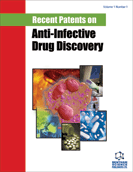Abstract
Introduction: Antibiotic resistance and extensive use of antibiotics are amongst the major causes of failure in antibiotic treatment. The purpose of this study was to investigate antibiotic resistance patterns and to identify resistance genes of quinolones and colistin in Escherichia coli. There are a very few patents on E. coli isolated from colorectal cancer. So, this study demonstrates that some bacteria resistant to ciprofloxacin have not resistance genes.Moreover, new patterns for E. coli are presented for isolates of patients with colorectal cancer.
Materials and Methods: Of the three healthy people, inflammatory bowel diseases (IBD) patients and colorectal cancer patients, 40 E. coli strains isolated after confirmation by biochemical and molecular methods. The susceptibility of isolates to antibiotics was investigated using disk diffusion test. After deoxyribonucleic acid (DNA) extraction, polymerase chain reaction (PCR) was used to identify genes encoding resistance to ciprofloxacin (qnr A, qnr B) and colistin (mcr-1). Results: The results showed that E. coli isolates from colorectal cancer patients had the highest resistance to piperacillin (67.5%), ceftazidime (47.5%), and cefepime (42.5%). Also, E. coli strains isolated from IBD patients showed resistance to antibiotic ceftazidime 13%. More than 95% of E. coli strains isolated from healthy people were susceptible to antibiotics. Based on the results, 18 (15%) E. coli strains showed resistance to ciprofloxacin. The qnr A gene was detected in 61.11% isolates; however, qnr B was detected in 9 (50%) isolates. Isolates resistant to colistin were not observed. Conclusion: These findings indicate increased resistance of E. coli to ciprofloxacin in comparison with prior studies. Further research in this field will increase our knowledge and more effective exposure to the antibiotic resistance of the pathogenic microorganisms.Keywords: Escherichia coli, ciprofloxacin, colistin, antibiotic resistance, colorectal cancer, inflammatory bowel diseases.
Graphical Abstract
[http://dx.doi.org/10.1016/S1473-3099(09)70054-4] [PMID: 19324295]
[http://dx.doi.org/10.1016/j.clinmicnews.2009.03.005]
[http://dx.doi.org/10.1128/CMR.18.4.657-686.2005] [PMID: 16223952]
[http://dx.doi.org/10.1158/1078-0432.CCR-13-1343] [PMID: 24334760]
[http://dx.doi.org/10.7150/jca.5835] [PMID: 23459622]
[http://dx.doi.org/10.1016/j.virol.2009.06.001] [PMID: 19720205]
[http://dx.doi.org/10.1186/jbiol168] [PMID: 19678917]
[http://dx.doi.org/10.1007/s13277-013-0684-4] [PMID: 23397545]
[http://dx.doi.org/10.1371/journal.pone.0056964] [PMID: 23457644]
[http://dx.doi.org/10.1053/jhep.2003.50311] [PMID: 12830003]
[http://dx.doi.org/10.1128/AAC.01647-05] [PMID: 16870791]
[http://dx.doi.org/10.1016/S1473-3099(15)00424-7] [PMID: 26603172]
[http://dx.doi.org/10.1128/AAC.37.4.696] [PMID: 8388197]
[http://dx.doi.org/10.1128/AAC.32.4.438] [PMID: 3132091]
[http://dx.doi.org/10.1093/jac/38.3.443] [PMID: 8889719]
[http://dx.doi.org/10.1093/jac/dkg222] [PMID: 12697644]
[http://dx.doi.org/10.1093/jac/dki468] [PMID: 16390858]
[http://dx.doi.org/10.1590/S1517-83822011000200008] [PMID: 24031655]
[http://dx.doi.org/10.2174/22102892010010100192]
[PMID: 16304852]
[http://dx.doi.org/10.1007/s00018-004-4060-9] [PMID: 15338052]
[PMID: 21266756]
[PMID: 21252459]
[http://dx.doi.org/10.1093/jac/dki388] [PMID: 16260446]
[PMID: 18219128]
[http://dx.doi.org/10.1128/AAC.47.7.2242-2248.2003] [PMID: 12821475]
[PMID: 23493061]
[http://dx.doi.org/10.1016/j.ijantimicag. 2010.11.022] [PMID: 21236644]
[http://dx.doi.org/10.1089/mdr.2008.0834] [PMID: 18707554]
 14
14






















